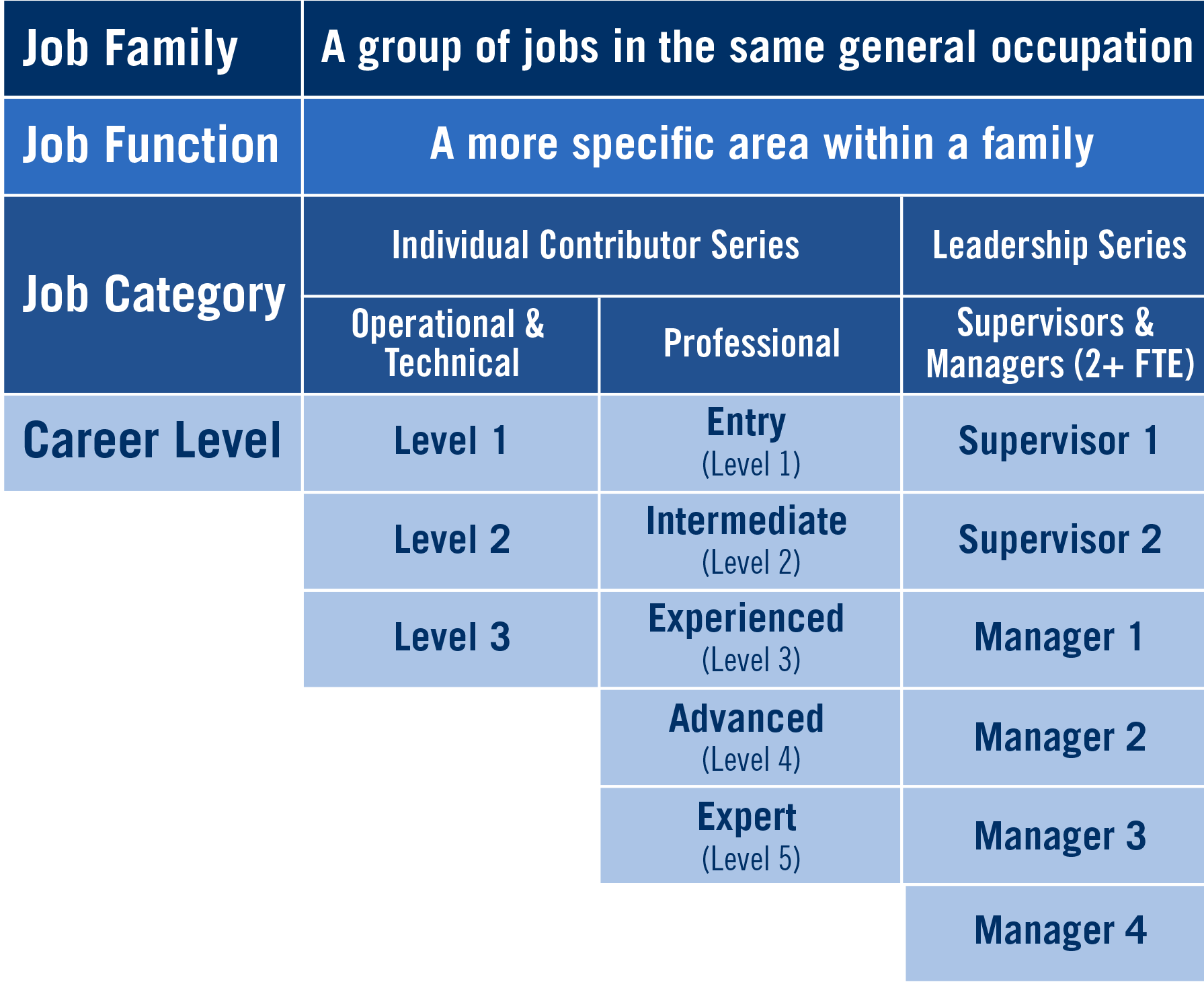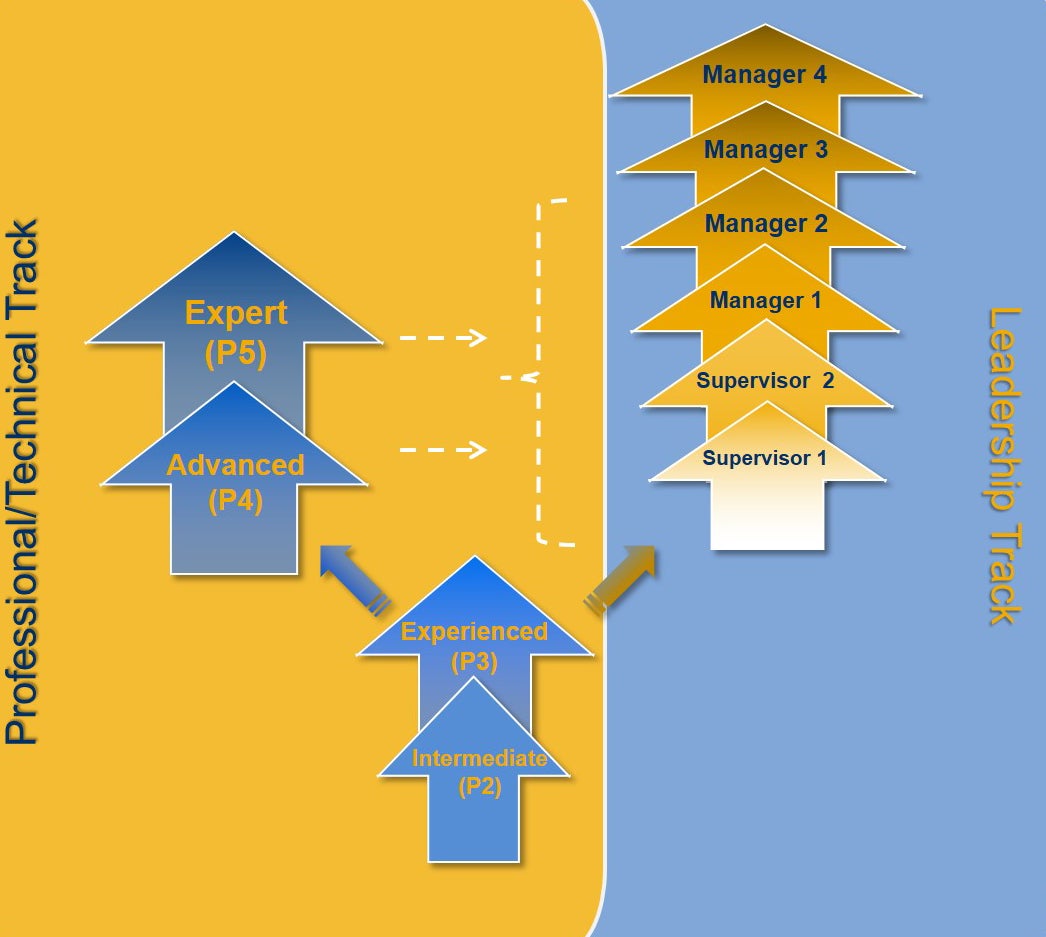Career Tracks
Career Tracks is the job classification structure that aligns jobs at the University to their respective labor market by occupation and supports the development of possible career paths designed to enhance career mobility. Levels for individual contributor, supervisory and management roles within each distinct functional area are defined consistently across occupations and with the labor market for comparable jobs.
Career Tracks organizes jobs into families, functions, categories and levels which corresponds to specific job codes and salary grades. Job categories and career levels are used as needed within each family and function. Each staff member will receive a new job description, or job standard, based on this structure which will be further customized to the position.
Career Tracks Structure
Job Family: A group of jobs in the same general occupation (e.g. Finance)
Job Function: A more specific area within a family (e.g. General Accounting)
Job standards within families fall into one of the categories in this illustration.
Defining jobs using consistent definitions of function, category, and career level (rather than using generic titles such as "analyst" or "manager") allows accurate pay comparisons with other employers in our labor market for comparable jobs.
Career Tracks – Career Mobility
This chart illustrates career mobility in the Career Tracks structure. Every job in the Career Tracks structure will fall within a cell on the chart.
At the highest level, jobs are organized by job family and function.
A job family is a grouping of jobs that are related. Within each job family, jobs are more narrowly defined by occupation, or job function. Jobs are further defined by category, which defines the type of work performed, as opposed to the occupation or subject matter.
There are three categories, Operational & Technical, Professional (individual contributors) and Supervisors and Managers, who achieve results through the efforts of staff.
Lastly, jobs are defined by career level that defines the scope, impact, responsibility and requirements of a given job title within a job category and function. The number of available levels within a given job family has been determined by looking at market survey data and working with subject matter experts for that family and function. For example, a Financial Analyst in the Professional job category could be a level 1, 2, 3, 4 or 5 professional.
Career Tracks Supports the development of career paths that enhance career mobility and development by defining options for next steps in a career progression within a job function.

